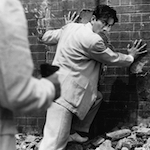 STRAY DOG is an Akira Kurosawa film from 1949 – only seven years into his directing career, but about a third of the way into his filmography. I believe it’s the first one I’ve seen by him that wasn’t a period piece. At the time he had gotten really into the Maigret books and decided to write a detective novel. It took him longer to adapt the book into a screenplay than to write the book itself. Apparently it started the genre of police procedurals and/or detective movies in Japan. Pretty impressive side-achievement to kick off an entire category of movies different from the ones he was known for.
STRAY DOG is an Akira Kurosawa film from 1949 – only seven years into his directing career, but about a third of the way into his filmography. I believe it’s the first one I’ve seen by him that wasn’t a period piece. At the time he had gotten really into the Maigret books and decided to write a detective novel. It took him longer to adapt the book into a screenplay than to write the book itself. Apparently it started the genre of police procedurals and/or detective movies in Japan. Pretty impressive side-achievement to kick off an entire category of movies different from the ones he was known for.
The mystery: where the fuck is my gun? Toshiro Mifune – who I have to admit I didn’t even recognize – plays the rookie homicide detective Murakami, who’s feeling like a piece of shit because somebody swiped his Colt when he was on a crowded bus. He figures it out too late, chases a dude (assistant director Ishiro Honda, five years before directing GODZILLA) but doesn’t catch him. So he has to learn all about the local pickpocketing and gun dealing scenes, recognize someone from the bus in a mugshot, convince her to give him a hint about who she gave the gun to, then finding out that person rented the gun to somebody…
It’s a long trail, and as he travels it he starts to find out about people being shot, and through unnecessary, guilt-fueled CSI work finds out it was indeed from his gun. It seems to be hard to get ahold of ammo, but they know how many bullets are in the gun, so there’s sort of a ticking time bomb factor of trying to catch the guy before he uses all of them.
They let Murakami take the case, working with older, more experienced Detective Sato (Takashi Shimura, the actor who was in more Kurosawa films than any other – 70% of them in fact).
It takes place during an oppressive heat wave. It opens with a long closeup of a dog panting like crazy. Dress shirts are often transparent from sweat. Even coats get soaked through. Foreheads, cheeks and bare legs glisten. They’re constantly toweling off their faces – Sato keeps doing the back of his neck and his forearms. People talk about having to work in the heat, or a place being like an oven because the roof is made of tin. A guy holds a fan in his lap, blowing it on his face. Sato gets a prisoner to talk by letting her enjoy a cigarette and a popsicle, and it has a similar feeling of joy to that ice cube bath in DO THE RIGHT THING.
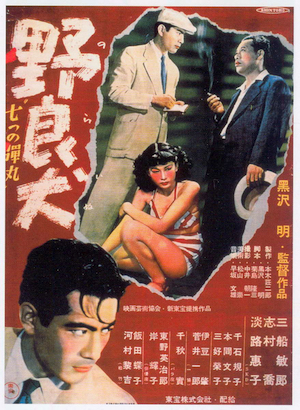 There are so many parts to the case – twists and turns, sure, but also just so many little pieces he has to figure out, people he has to track down and get something out of. A favorite stretch is when he identifies the pickpocket from the bus, Ogin (Noriko Sengoku, KWAIDAN, INVASION OF THE ASTRO-MONSTER), and she won’t tell him anything, so he follows her around town all day (which we see in some detail). At night she goes to a bar and he waits outside on a roof. Exasperated and maybe a little charmed by his stubbornness, she decides to bring him a beer and food and at least give him a hint to point him in the right direction.
There are so many parts to the case – twists and turns, sure, but also just so many little pieces he has to figure out, people he has to track down and get something out of. A favorite stretch is when he identifies the pickpocket from the bus, Ogin (Noriko Sengoku, KWAIDAN, INVASION OF THE ASTRO-MONSTER), and she won’t tell him anything, so he follows her around town all day (which we see in some detail). At night she goes to a bar and he waits outside on a roof. Exasperated and maybe a little charmed by his stubbornness, she decides to bring him a beer and food and at least give him a hint to point him in the right direction.
Another is when they track down the suspect’s pouty young girlfriend Harumi Namiki (16 year old Keiko Awaji, WHEN A WOMAN ASCENDS THE STAIRS), who is not anxious to snitch, no matter how much her mother (Eiko Miyoshi) wants her to.
Murakami was in the army before he became a cop, and the difference between the two is a major theme. His sense of discipline always seems to confuse the other cops. He asks to be punished for losing the gun, and his boss is kind of taken aback. He turns in a letter of resignation when the gun is used in a crime, but the boss rips it up.
During the investigation he blames himself each time someone is hurt by his gun. Sato gives him pep talks about it not being his fault, or that it would’ve been another gun if it wasn’t his, but he never seems to accept it. He doesn’t deviate from his code. And it’s such a powerful symbol: the things we do have an effect on others. His mistake will effect, maybe end, other people’s lives. He keeps track of the bullets, knowing each is another potential tragedy on his conscience.
This is not to say soldiers have a higher standard of behavior. There’s a scene where they’re questioning a guy and Sato, noticing how scared he is, says “We’re not going to beat you. We’re the police, not the army.” And Murakami says that he saw men turn into “beasts” during the war, which seems to be what happened to the suspect, Yusa (Isao Kimura, LONE WOLF AND CUB: WHITE HEAVEN IN HELL), also a veteran. They wouldn’t have known to call it this, but Yusa seems to suffer from PTSD. Long before we ever see him we hear how haunted and sad he is from his mom, his friend, a prostitute he visits, his own letter. But he seems to go into budding-serial-killer territory judging from his letter, which talks about killing a cat.
That’s the more important comparison – between these two men, both veterans, both men in their twenties wearing white linen suits, both victims of a stolen knapsack on a bus, but handling their frustrations in very different ways.
It’s an especially interesting topic coming only four years after the war, from a country who were on the wrong side. We know from our movies – THE BEST YEARS OF OUR LIVES came out in 1946 – that it’s hard enough to deal with when you’re the good guys, and the winners. And since some of it is filmed on location it’s a time capsule of this post-war period. I learned from the documentary on the Criterion DVD that the long montage of Murakami walking through the seedy parts of town hoping to be approached by a gun dealer was filmed in several actual black markets. Since they were dangerous places to go they have a bunch of shots that are just his feet, portrayed by a double (Honda again).
It’s also a good time capsule in the scene where they search for a guy in the stands at a baseball game. There’s a bunch of footage of a real game, and an enormous crowd. That has nothing to do with the war, but I’m sure it’s amazing for Japanese baseball fans.
Some of it is paced pretty slow. There are many investigation montages, much longer than I’m accustomed to from American mystery movies, which might be Kurosawa figuring out and/or inventing some of this cinematic language, but also makes the movie feel pretty immersive, emphasizing that searching and spying and testing theories takes a long time. And it’s an effective thriller when it all comes together at the end. He finally catches up to his guy, leading to a frantic chase, and there’s this moment where they’re standing facing each other, and it’s scored by a woman practicing piano in a house nearby. When she hears a gun shot she looks out the window and sees them, but they just stand there, so she thinks it was nothing and goes back to what she was doing. (We don’t see if she reacts to the other two shots.)
And then they have this fight through the plants and shallow water. No music, and not at all elegant. Desperate flailing. A dog fight, I guess. The end of the fight, where they lay side by side bleeding, one handcuffed, (as a parade of children sing in the background!) made me think of John Woo’s MANHUNT, which made me think of John Woo in general. There’s less of a bond because they never talk to each other, and don’t even see each other until the big scuffle at the end. But it has that Woo-ian sense of enemies who recognize the fact that they are alike.
I honestly thought it would end right then, with the possibility that the two of them just die there. It’s not that dark. The wrap-up actually leaves the impression there could be more Murakami & Sato mysteries on the horizon. I guess he must’ve learned to keep better track of his shit, so it never happened. Good for you, Murakami.
Thank you to Rowland on Twitter and anyone else who recommended this to me over the years.

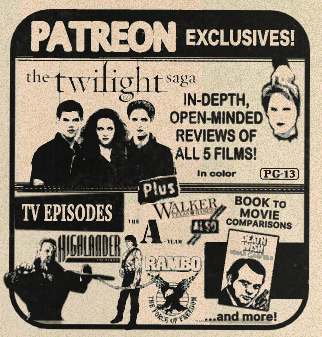

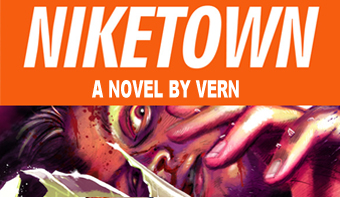
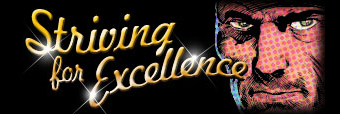
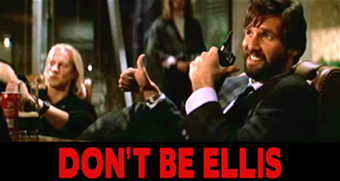
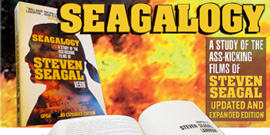
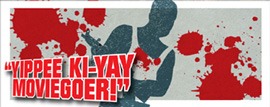








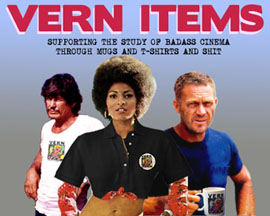
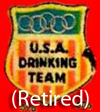
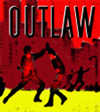






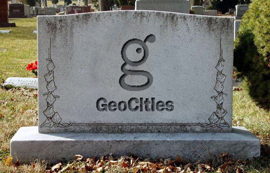
April 23rd, 2020 at 10:04 am
Yeah, hard to recognise Mifune under that cap that looks like it came straight out of BUGSY MALONE. Shimura rocks a great hat in this too. The dynamic between them (Mifune and Shimura, not their hats) is beautiful too, and must’ve pretty much set the mold for the rookie-no bullshit oldtimer relationship.
William Gibson supposedly walked out of BLADE RUNNER after 10 minutes and in shock after realising that a film maker had captured the cyberpunk vibe he was shooting for in his unfinished novel. I always thought Ed McBain might’ve had the same reaction coming out of STRAY DOG, although in truth I guess it didn’t get a US release until well after McBain’s kind of police procedural was established. Kurosawa made the connection though, going on to film Edo Makubein’s King’s Ransom as HIGH AND LOW.
I love this one, although probably not as much as HIGH AND LOW, which really is Kurosawa and Mifune firing on all cylinders.